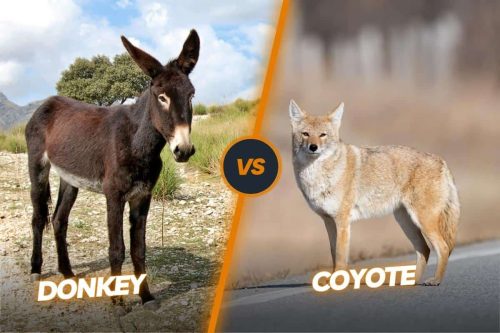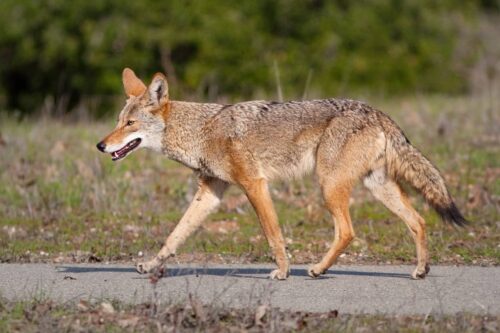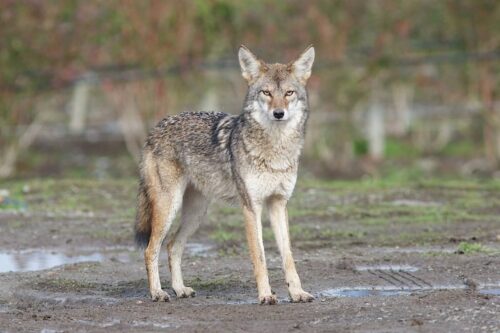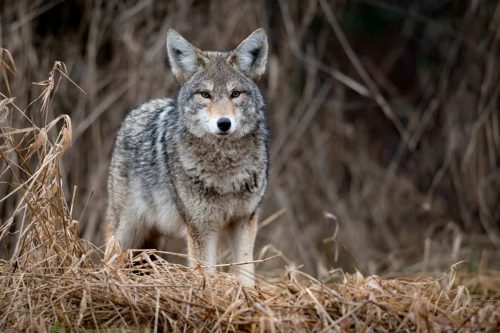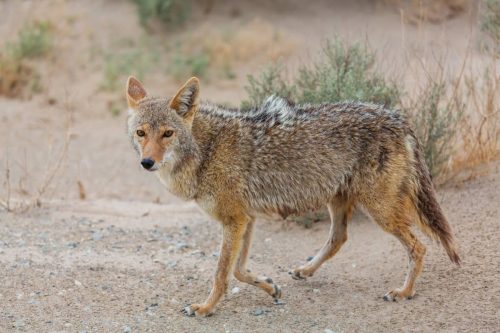Are coyotes territorial: Let’s explore how big are coyotes’ territories.
All wild animals differ in their nature. Some of them want to have their own home or territory to get settled and some of them don’t like to stay anywhere for a very long time. Coyotes are territorial animals. They establish and defend territories for various reasons, including finding food, mating, and raising their young.
Coyote territories can vary in size depending on factors such as food availability and population density. In areas with abundant resources, territories might be smaller, while in areas with limited resources, territories could be larger. In this article, we are going to explain in detail whether Are coyotes territorial or not and how big are Coyote’s territories if they are territorial.
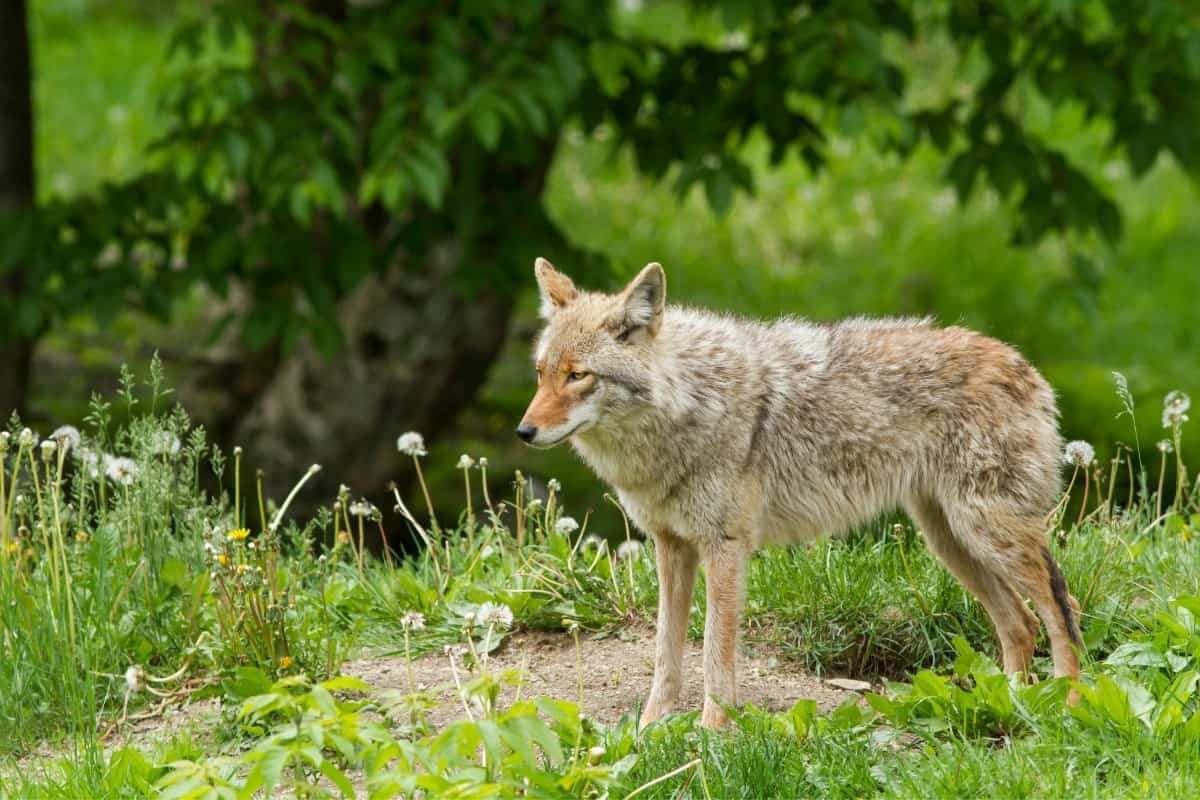
Contents
How big are coyotes’ home territories?
Coyotes remain territorial throughout most of the time of the year. The territorial size varies based on many factors. But the main reason behind expanding this territorial range is the food availability in any area. Male coyotes like to expand their territory much larger than female coyotes. Male coyotes also like to overlap their territory with other wild animals or coyotes but female coyotes don’t show this tendency.
When it comes to overall territorial size, female coyotes like to expand their territory from 5 to 8 square miles. On the other hand, male coyotes like to expand their territory much larger than female coyotes. The territorial range of the male coyote varies between 30 to 40 square miles. Sometimes coyotes also abandon their territory if they are facing food shortages. They migrate and move somewhere else where they can find abundant resources for food.
Interesting read: Dingo vs Coyote
Territorial and sheltering behaviour of the coyote
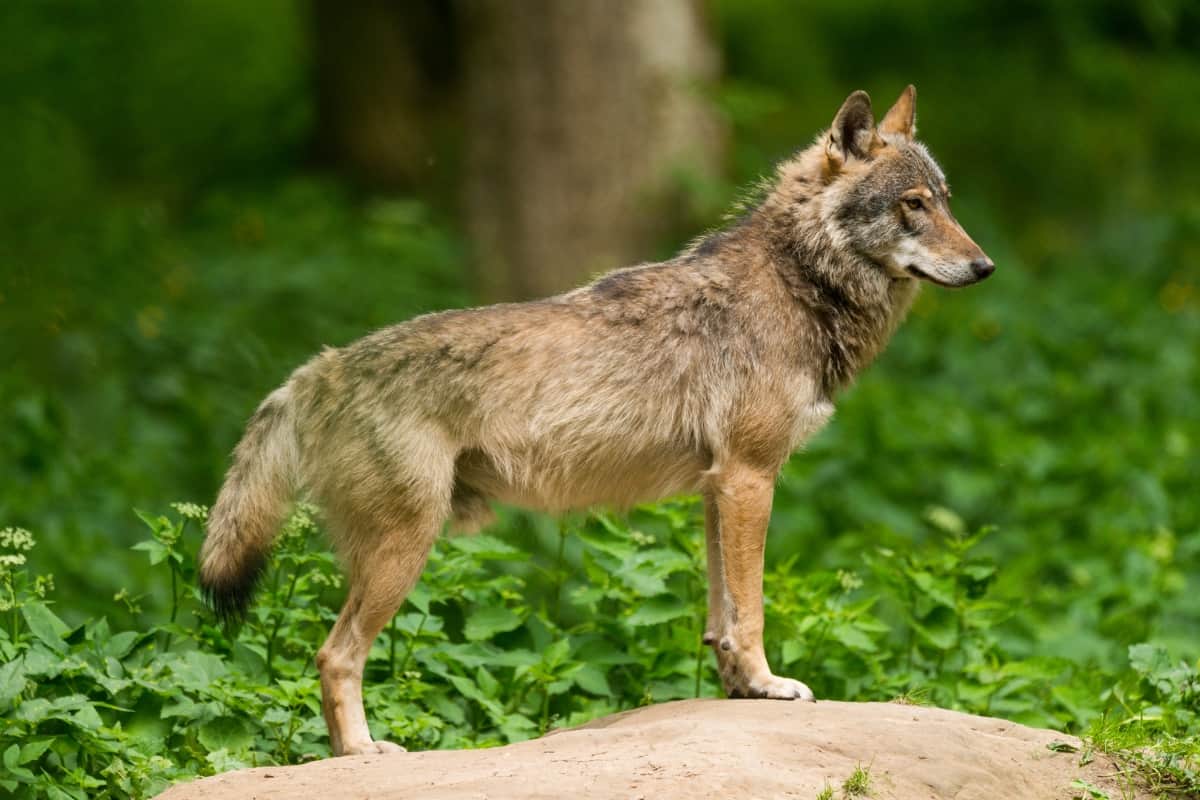
Coyotes are indeed territorial animals, and their territorial nature plays a crucial role in their social structure and survival. Here you can have a look at some key aspects of the territorial and sheltering behaviour of coyotes.
Territory Establishment
Coyotes establish territories for various reasons, including finding food, raising their young, and avoiding competition with other coyotes. Territories are generally established by a mated pair of adults. Sometimes they also establish themselves individually on their own.
Territory Defense
Coyotes defend their territories from intruders, especially other coyotes. They do this through a combination of vocalizations, scent marking, and physical confrontations. Howling is a common way for coyotes to communicate their presence and establish territorial boundaries. They also make other voices in case of emergency.
Vocalization
In vocalization, the most important voices are their howling. Howling is an important aspect of coyote territorial behaviour. By howling, they announce their presence to both resident coyotes and potential intruders. This vocalization helps maintain social bonds within the pack and deters other coyotes from entering their territory.
Scent Marking
Coyotes use scent markings to define and defend their territories. They urinate and defecate along the boundaries of their territory, leaving their scent as a clear marker of their presence. This not only serves as a visual boundary but also conveys information about the coyote’s sex, reproductive status, and general health.
Reduce Competition
Territorial behaviour helps to reduce competition for resources, especially food and mates, within a defined area. By maintaining control over a territory, coyotes can secure the resources needed for their survival and reproduction.
Breeding Season
During the breeding season, territorial behaviour becomes more intense as competition for mates increases. Resident pairs defend their territories more aggressively and may engage in confrontations with intruding coyotes.
Urban territories
In urban and suburban environments, coyotes can adapt their territorial behaviour due to the presence of human food sources and altered habitats. In such areas, territorial boundaries might be less clear, and coyotes may have larger territories that overlap with both human spaces and other coyote territories.
Territorial nature of the resident and transient coyotes
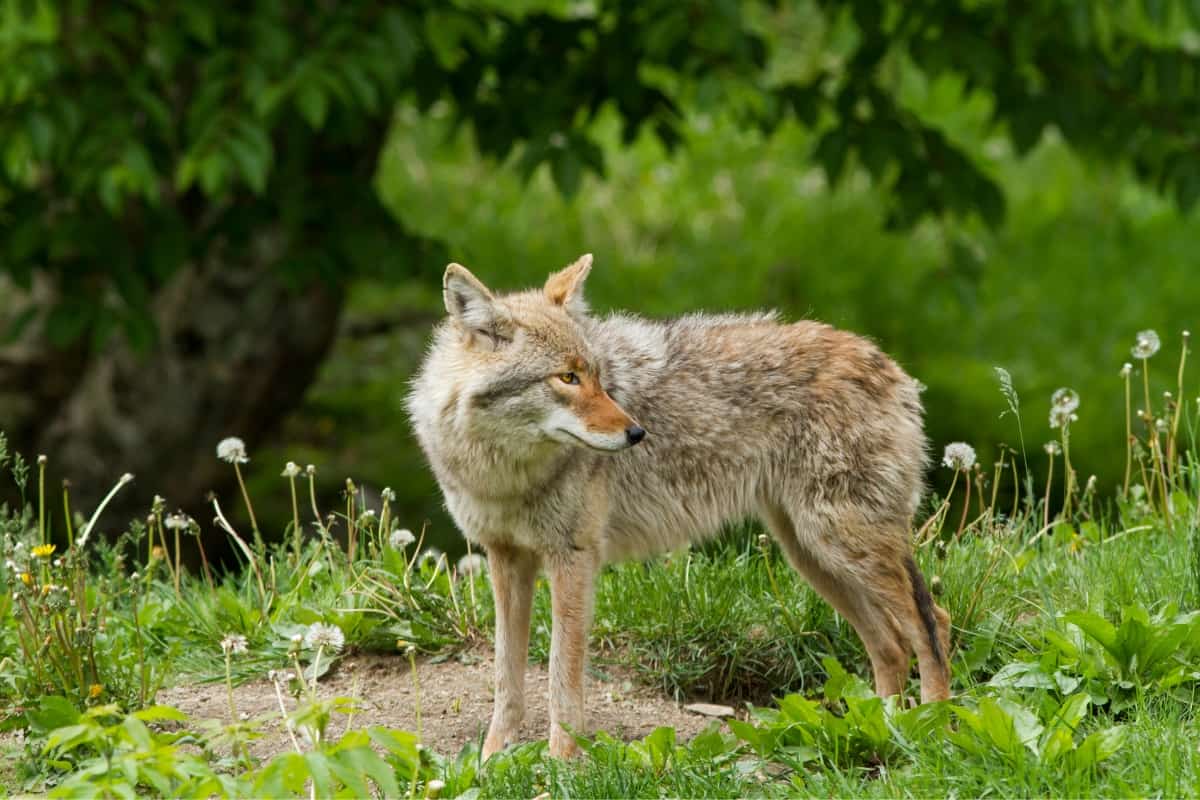
Resident coyotes like to remain in the pack and defend their territory at any cost. Transient coyotes don’t form packs and like to spend most of their time alone. These are old, sick and orphan coyotes who are left alone. Transient coyotes don’t like to have their own territory and usually spend most of their time in between the resident pack coyotes. That’s why resident coyotes are very good at recognizing geographical features like streams, roads, etc. Transient coyotes spend most of their time alongside the roads and they are also hit by the vehicles on the roads.
Do coyotes usually stay in one area?
Coyotes are not strictly sedentary animals, but their movement patterns and behaviour can vary based on factors such as food availability, habitat, population density, and human presence. While they do establish and defend territories, their movements can extend beyond these boundaries for various reasons like territorial behaviour, Nomadic behaviour, human influence, dispersal, seasonal changes, and several other social factors.
Coyotes can establish territories and exhibit territorial behaviour, their movement is not strictly limited to these boundaries. Their ability to adapt to different environments and situations contributes to their wide distribution across North America and their success in a variety of ecosystems.
Conclusion
Coyotes are indeed territorial animals, their behaviour is influenced by a range of factors, including food availability, habitat type, population density, and human interactions. Young coyotes disperse in search of their own territories, sometimes travelling great distances, while adult pairs defend their territories to secure resources for survival and reproduction.
The dynamic interplay between these factors contributes to the complex movement patterns and social dynamics of coyotes. It’s important to note that while coyotes are territorial, their behaviour can also be influenced by local conditions and human activities. Understanding their territorial nature can help people coexist with coyotes while minimizing potential conflicts.

Izzy is an experienced ranch worker who has a passion for exploring nature and getting up close to wildlife. With her connections to various animal organizations, Izzy is well-versed in animal care and rehabilitation.

